Archive of ‘Weekly Updates’ category

SAVMP Installment 1
We would like to welcome you to the second year of the SAVMP (School Admin Virtual Mentor Program). This year, we have decided to keep the pairings and the overall group smaller so that we can try to create a better program for participants. I am also excited to lead this project with Joe Mazza, Paul McGuire, and George Couros, to help with the dissemination of not only work, but more importantly, expertise and perspective.
To start off the program, we are going to focus on a blog post that George has written previously on “5 Questions You Should Ask Your Principal”, over the next 5 installments of this blog, we are going to give you and your mentor time to discuss each question and use it as the basis of your program.
The first question we are going to focus on is in based on the idea of creating strong relationships to build a solid foundation in your school. From our collective experience, we have seen many administrators focus on the idea of being “innovative” before focusing on the spending time with staff, students, and understanding classrooms. As George would say, “Innovation is a human endeavor”, and it is important that we focus on these connections first.
So here is the first question, whether you are a principal, vice-principal, or on any part of a leadership team:
“What are some ways you connect with your school community?”
Please feel free to write comments on the blog, discuss this with your mentor/mentee, and then share a post on your own blog, whether it is through writing, video, or some other medium.
If you are not an “official” member, but would like to contribute, please leave your link in the comments below.
Thanks for your dedication to this program! We are looking forward to learning from one another!
Beginningly,
Amber
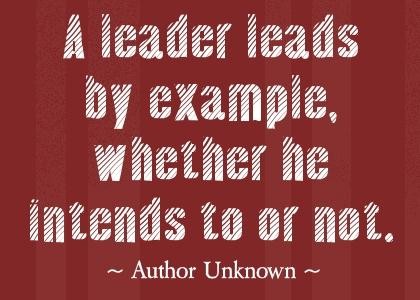
Hi stranger friends!
I was Voxing with George this morning, 🙂 and we were lamenting how life just exploded for us both this spring. He was busy getting engaged and we all know how time consuming wedding planning can be, 🙂 Add that to an influx of speaking engagements, he’s been in high demand! Not just speaking locally either…the man has been ALL over. Meanwhile, I’ve been busy getting a new job in a neighboring district and had an award thrown in, just for good measure.
Excuses? Possibly. The reality of our admin worlds? Definitely.
There isn’t a calm “season” in education, especially when you are trying to live to the fullest outside of your building. Recognizing the ebbs and flows of what we do is important to recognize as you contemplate leadership. We talk about modeling what we want to see from our staff, and this balance counts too! Administrators have to set boundaries and limits. The purpose of leading is to show through your walk and talk, that you are genuine. Being busy, and letting things slide at times, (gulp.) is a reality. It’s if and how you handle that slide that speaks loudest to your staff.
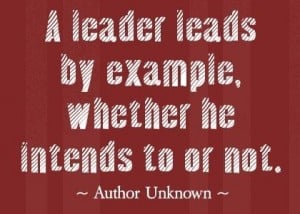
That being said, it’s the end of the school year. It’s time for EOY procedures, it’s time for making plans for the next year, it’s time for goodbyes. Thank you for joining us on this SAVMP adventure. I’m going to let George close us out proper, but I wanted to remind you to value the connections you have made through this program. Reach out to me, or George, or your mentee’s/mentor’s, if you ever have a need.
Good luck and happy summer!
Amber
When I first began as principal, I wanted to build a culture that was focused always on the notion of “what is best for kids”. If we always started with this question, we would make better decisions for our students.
As I wanted the school to be extremely focused on our kids, I noticed that when you walked into the front foyer, they had the pictures of all the former principals at the school, and soon my picture would be added to the wall. I hated it.
If we were to be a school that focused on kids, why was the first thing that you saw when you walked into the school the principal, past and present. I decided that all of the pictures were to be taken down and replaced by pictures of current students in the building doing different activities. The change was massive! As my office was right by the front office, I noticed kids, parents, and staff all staring up at the wall, mesmerized by the pictures. We also put a TV up in front and head just a running slide show of students so we could get as many of our students shared in the front hallway. That little change and focus on them, set a tone for so many other aspects of what happened in school with students.
Sometimes we do not notice the little things in our school that are just “fixtures” on the wall but promote a very different culture of what we are trying to create. This was one of the reasons that we started this program in the first place. The idea that you could talk to someone outside of your own organization to get some different ideas and perspective on how to build a more positive culture in your leadership.
What are some of the little things that you could do or have done, to promote a more positive culture for students?
Thanks to one of my favourite principals in the world, Shauna Boyce, for inspiring this question with her recent blog post on “School Culture“.
Leaders should never work in isolation and the best one’s often create teams that will ensure they are doing what is best for kids. In a previous article I posted on my own blog, I share some of the attributes that I look for in a great Assistant Principal. I would like to challenge you to think and share what you look for in a “leadership partner”? See the article below.
——————————————————————-

cc licensed ( BY ) flickr photo shared by Big Mind Zen Center
A good friend of mine has just become an Assistant Principal (Vice Principal), which was probably one of the best jobs that I have ever had. Often you get to help guide the direction of the school but you still have many opportunities to be in the classroom and connect with kids, more so than a principal. That being said, I believe that a principal can still connect with kids in many ways, but in my experience, they have a lot more meetings and have to be out of school a lot more.
I have been blessed to have worked with an amazing principal who had taught me a lot and even though we would argue (a lot), it was always about figuring out what was best for the school. To be honest, he encouraged the push-back because he cared more about “what was right” as opposed to “being right”. My two years with him was probably one of the best learning experiences that I have ever had and I still connect with him all of the time when I need help because he always focuses on what is best for kids.
On the other side of the coin, as a school principal, I was blessed to work with amazing vice principals who pushed me to be better. They challenged me to be better, but they were also sponges. They were always open to learn and develop; not only from what I would share to them, but from the experiences that they had with staff, students, and parents. I expect (these are non-negotiables) that administrators focus on building relationships with the entire school community, are approachable, are change agents, and ALWAYS have the idea of “what is best for kids” driving their decision-making. My “administrative team” colleagues have had these qualities in spades.
Thinking about the work that I have seen from many staff in Parkland School Division, here are some of the other qualities that I noticed the most successful ones have all had:
1. Self-starters – There is often a misperception that a principal should be delegating tasks to the leadership team and I guess sometimes this does happen. With that being said, I rarely had to ever ask my leadership team to do anything because they were already jumping on every opportunity to do different things for our school. One of my proudest days as a principal was when our school started “Identity Day“, not only because it was such a great day for our school community, but this was an idea that was started and lead by my assistant principal. Not only did she come up with the idea, but she worked with every single grade to ensure that the day was a success. Being able to be actively lead initiatives and work alongside teachers gave them instant credibility.
They did not only do the “fun” jobs, but my assistant principals jumped up to take on some of the boring stuff to ensure that we would all work together to better their school. Did they love doing that work? Probably not. But they knew what my strengths and weaknesses were and we would do things that would compliment one another as opposed to say “that is a job for the principal”
2. Determined to work towards success. – I have always been adverse to say things such as, “I am okay with failure”, because of the people that I have been blessed to work with. I think of Jesse McLean and “Innovation Week“. When he shared his thoughts with me about the week he was determined to make it a success, yet I know there were a lot of challenges that he, his admin team, and his school worked through to make the day a success. When I think of “failure”, I think of it as a step towards success, as opposed to something that determines success. Things may not be perfect, but I know that some of the people I look up to work extremely hard to make whatever they do the best possible. Failure is not finite, but a bump along the way.
3. Always takes ownership when things go wrong, but always gives credit when things go right. – When I think about “Innovation Week” and “Identity Day“, what was humbling was that the people that lead these initiatives gave ALL of the credit to others even though they were the catalysts for the ideas. They repeatedly acknowledge the hard work of the staff and said nothing of their part. On the other hand though, if things would have failed or there would have been trouble, they would have owned that and not blamed others. What that shows me over and over again, is that they are more worried about what is best for kids and the well-being of staff. They carried a lot of weight on their shoulders yet they gave credit so much to others. Not that it wasn’t deserving (because it absolutely was), but their focus was on the team and not themselves. Still, they knew they had to do their part to make sure it was a success.
4. They will challenge authority.– I will never forget my interview to become an Assistant Principal with my soon-to-be boss. We actually got in an argument during the interview and I thought that I would have no chance to get the job. A few days later, he called and offered me the job. What he had told me was that he did not want me to say “yes” to everything that he had said, but to push against him when I disagreed. He did not want to go in front of the staff and say something that was ridiculous while I just simply watched him and disagreed in my head. Again, he focused on what was right, not being right. This did not mean that he agreed with everything that I said when I did challenge him, but he always tweaked his ideas based on my feedback.
When I hired my AP, this was a quality I knew that she had because she had pushed me as a teacher when I was an administrator. I knew she was always focused on what was best and I learned so much from her challenges that I thought there would be no better hire. If you are looking for someone to just agree with everything you say as an administrator, then you are better off hiring no one.
I was spoiled as both a Principal and Assistant Principal to work with amazing people that helped me to be successful. I learned a ton from them and they were people that were extremely talented, trusting, yet were sponges; they always wanted to learn and grow. With those that I have worked with, they have taught me that these qualities they possessed were not only for “administrators”, but are something that you should expect from others in your organization as well. As an administrator, you sometimes have to make some tough calls, but if you are open to working with your administrative team and build trust with your school, those decisions become easier.
As I write this, I worry that many people new to administrative teams will think that simply implementing these ideas with their “boss” will lead to success, which is not true at all. Leaders of organization would have to be open to these things, but in my opinion, if they are, their schools will be much more successful. The collaborative approach to school leadership (not just administrators, but whole school) is more likely to lead success for kids than would an approach based on one. I am hoping that the “top” of organizations would think about these qualities that I have listed and think about how they create an environment to ensure that these qualities can flourish.
If you are not open to learning from others in your building as “the leader”, will you really be able to create an environment where students and staff excel?
When thinking about ways to bring about change or attempting to cultivate something new for your campus, where do you begin? Do you start with a formal staff meeting? Where you stand in front of the group and tell them what you want to see happen?
How effective has the been?
Conversation at dinner last night talk centered around those rockstar teachers on your campus. The ones who are willing to go above and beyond because its what should be done for kids, not because they are getting paid to be there. When I think about some of the crazy ideas that I wanted to see happening in classrooms, I think about the teachers I went to talk with to make that happen. When I wanted to see a bulletin board focused on the digital tools happening in the classroom, I knew exactly where to go to make that happen. This teacher knew my expectations, knew my vision, and what my end goal was with the something as simple as a bulletin board. (Vision! It all come back to vision!) I also had to balance what was asked of this particular rockstar in order to not detract from her teaching, or her relationships amongst the staff. Todd Nesloney wrote an inspiring post about how he embraced that role on his campus.
Who are your teacher leaders? How are you lifting them up and empowering them to be an example without ostracizing them from the rest of your staff? Share your strategies with your mentees this week so they can start keeping an eye out for ways to embrace and lift up those around them.
Have a great week!
Amber

Recently I took part in a leadership activity that aptly illustrated the importance of “clear” communication. The group was partnered up. One partner had a picture of a figure, the other a blank piece of paper. While sitting back to back, the person with the figure attempted to explain what the picture looked like while the other partner drew. It is an understatement to say that at the end of the activity, the pictures didn’t typically match.
As a leader it is up to you to clearly define not only your vision, but your expectations. If they are not so clearly stated that anyone can read, follow or understand, the onus falls on you, as the leader to clarify. If your expectation is that parents feel welcome when they walk in the doors, what are the look for’s that indicate that is happening? Have you shared those with your staff? What if your passion is that every student feels heard? What does that actually LOOK like in a classroom? Are your teachers aware? the counselor? Many leaders in the corporate world now understand that clear, two-way communication is vital to the success of any organization and its leaders. Jim Collins, in his best selling book about making organizations better, Good to Great, writes, “A primary task in taking a company [read: school or school system] from good to great is to create a culture wherein people have a tremendous opportunity to be heard and, ultimately, for the truth to be heard.” (2001, p. 88)
Students learn better when adults communicate well. The need for good communication in our schools is great because the needs of our students are great. Students matter.
The spring is the downhill slide in education. We’re moving towards the end of the 2013-2014 year, and plans for 2014-2015 are on the horizon. Take advantage of what’s left of this semester to evaluate just how clear is your “communication”. Is there something that you can share with your group that didn’t go as expected, because of a communication miscue? or a success?
Have a GREAT week!
Amber

We’ve been discussing the “change matrix” within a leadership group in my district.
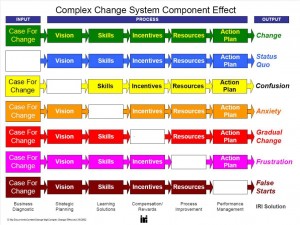
What’s in it for me? When it comes to change, this may be one of the most frequently used phrases, both vocalized and internalized. Too many times we miss out on great opportunities because we have the wrong mindset. At what point in a teacher’s career does the focus shift from doing what is best for students to, “let’s do what’s best for me.” Our systems are built around the convenience of the adults and not necessarily for the benefit of the students.
I know that some of you may disagree, but where’s your evidence?
1). Master schedule is based on adult’s preference.
2). Teachers threaten to quit or transfer if they do not get the classroom or conference that they want.
3.) Knowing that some teachers lessons aren’t up to par, but not wanting to rock the status quo.
4.) Looking the other way at worksheet driven classrooms because “the test scores are fine.”
Educators need to be redirected back to the purpose of our profession – doing what’s best for students’ success. Our current practices may give us gradual change, but not the change you need to truly make a difference.
We must provide incentives, which doesn’t always mean money. Knowing how important the students are to both their own success and to ours, what can we do, incentive-wise, to get teachers to focus on what’s best for students? How do you steer the conversations back to what’s best for students? Are you a students’ principal?
(Thanks to Dr. Gerald Hudson for the starting point here, :))
Amber
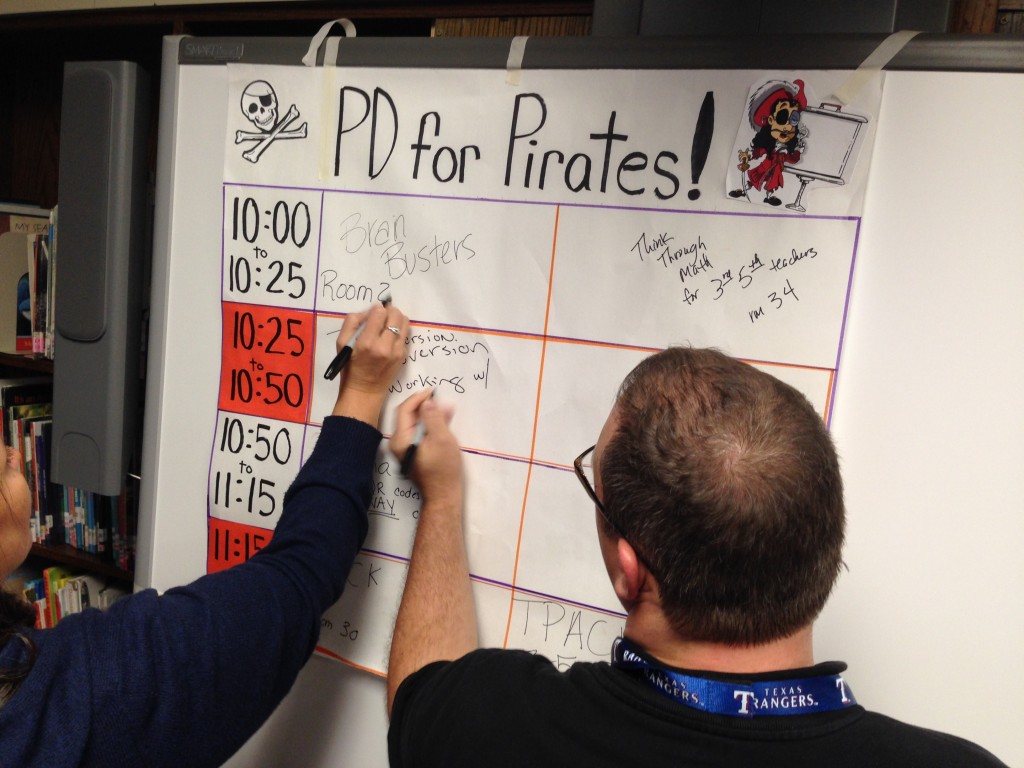
 When planning for your staff development or professional development or growth opportunity…do you differentiate for your teachers?
When planning for your staff development or professional development or growth opportunity…do you differentiate for your teachers?
I know, I know…with everything else on your plate, now you’re supposed to add that to your list of to do’s? The answer is yes, if you want them to be completely dialed in and connected. In the same way that we expect our teachers to meet the needs of the learners in their class, we as administrators need to recognize the different levels of abilities and experiences on our staff. A differentiated approach to PD is needed to meet the diversity of teacher needs. PD should always be an evolving process of reflection and growth, and the way to accomplish that, is to get creative with how it’s planned and delivered.
Meeting teachers where they are isn’t nearly as complicated as it sounds. Depending on what you are discussing, teachers can be grouped according to familiarity or confidence in the topic. This can be discovered through a needs assessment or of their own volition. Allowing teachers to feel invested and providing a choice in what they are learning will almost certainly pay dividends in the long run. This will also reinforce your expectations within the classroom.
Grouping teachers is one way of differentiating. What else can you do?
- Give options in what your teachers are discussing, #edcamp style. I’ve even “prepped” teachers with a couple of topics that I knew that I wanted to see covered, but left most of the board blank, for their input.
- Allow conversations, not just “sit & get” sessions.
- Flip your meetings, to make the discussions more valid & transparent. Allow teacher voice!
- Let your groups of ability leveled learners be led by members of your own staff. Call on the experience in your building!
- Create a bucket list of activities you’d like to see in classrooms.
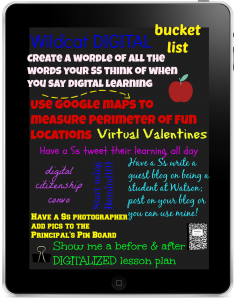
Supporting teachers begins with knowing that we should meet their individual needs in their own learning and growth. We no longer can be ok with the status quo, or a one size fits all mentality when it comes to PD. As the leader, it is up to you ensure that each educator has what they need in order to be the very best that they can be in their classroom. In the same way that students want to be interested, invested, and engaged, our teachers do too! Make your professional development an opportunity to be a role model and allow for a “different” development, a differentiation based one!
I challenge you this week to rethink your professional development. Share one way you plan on perking up and differentiating your PD!
I hope you have a great week and are warm where ever you are!
Amber
One of my hopes for this program is that educators will walk out with an online portfolio that will help them with their work moving forward. I recently have written a blog post on the topic, which I share in full below.
“My prediction is that in the next ten years, resumes will be less common, and your online presence will become what your resume is today, at all types and sizes of companies.” Dan Schawbel, 2011
Having a conversation with teachers and administrators, I asked how many of them still had “paper portfolios”. Surprisingly, it was over half of the room, and many of them had developed it in university, updating it only when job opportunities arose. I remember actually having a paper portfolio and applying for jobs, and hating the process of dusting off a binder, adding a ton of great information into it, only to walk into an interview and have the person hiring not even look at it. It was extremely frustrating as I had put a lot of work into it, only to have it ignored, and I never really understood why.
And then I became a principal.
When I would look at applicants for interviews and have a limited amount of time to talk with them and interact, the thought of flipping through a binder with them sitting in the room in front of me, seemed a little ludicrous. I wanted to spend as much time getting to know them as possible. At the end of the interview, sometimes they would offer to leave the portfolio with me to peruse at my leisure and they would either come back to pick it up or I would have to mail it (does anyone go to the post office anymore?). I might have been the exception in my process a few years ago, but this is becoming more of the norm now, not only in education, but all aspects. A portfolio could be great for the process of an interview, but shouldn’t the things you do help you get the interview in the first place? Sending mass binders out to potential employers doesn’t make much sense.
I believe it is time (it has been for awhile) to ditch the paper portfolio and move it online. Here are some reasons below.
1. The Google Factor – We talk to students a lot about developing their digital footprint, yet how often do we help them build this footprint in schools? A digital portfolio is hugely beneficial to this type of work as it helps you to create your own online presence and shares the great work that you, or your students are doing. The nice thing about a digital portfolio is that it is also not limited to text, but can be anything that you can see or create. If I want to be a photographer, animator, actor, athlete, or anything else, digital can help share that information and make it accessible to others. A portfolio that is able to bring together all of these different elements into one space will make your “footprint” that much better and easier to find.
2. Searching and Organization – My own blog is a “portfolio” of my work (if you want to see how it is set up, check out this video) that I have been working on for over four years, in a constant and continuous basis. That is a lot of information over time, but with thoughtful “tagging” and “categorizing”, I am able to google myself and find my own work. For example, if I want to find any time that I referenced “Daniel Pink”, I simply do a search for his name om my blog and voila! Even using something as simple as “Command + F” (“Control + F” on Windows) can help me find a word instantly on amy page. This is much easier than flipping through pages in a binder.
3. Anywhere, any place, any time access – If you were to have a paper portfolio and I asked to see it while you did not have it in hand, how would you get it to me? If you ask my for my portfolio, I would simply give you the URL to my website and peruse away. This was the nice thing about applicants that had an online portfolio to share with me. It was accessible before, during, and after an interview and at my convenience. In a world where there is always a shortage of time, accessibility at a time of your convenience is important.
4. Creating opportunities instead of looking for them – In a market where jobs are scarce and a university degree guarantees nothing, the competition for positions is tough. With a online portfolio, especially one that continuously invites people to look at it (every time I write a blog post and you read it, you are looking at my portfolio), you have the ability to have opportunities come to you, instead of the other way around. I know many people that have simply shared the work that they have always done on their online portfolio, and then were asked to speak at conferences or consult with schools, simply because their work was visible. Simply sharing your work is not enough to create those opportunities, but you will never know what is the one thing that you share that someone else will deem valuable to their organization and call in your expertise.
5. Continuous learning – One of the most powerful things I have found by doing an online portfolio is the growth in my own learning that I have done by sharing. By simply knowing that other people will see what I write or share, I put a lot more thought into what I am doing. I also find tremendous value in the comments and conversation that is started from some of the things that I share; they push my learning. If we are to look at online portfolios as both a way to “showcase” and “learn”, they are hugely beneficial to our growth.
Although I have listed several reasons why an online portfolio is beneficial (and I am sure I could list a lot more), many educators are happy where they are in their career, and would argue that there is no need for them to have an online portfolio themselves as they will never apply for another job. My belief is that if we are truly doing what is best for kids, we have to learn how to do it ourselves to help our students in the future. Wayne Gretzky once said, “A good hockey player plays where the puck is. A great hockey player plays where the puck is going to be.” We need to look ahead for our kids sake.
Another question that I get is, “Well what if no one googles me? Then I have done all of this work for nothing.” To be honest, if you get not one single opportunity from an online portfolio and only went deep into your own learning, isn’t that still a pretty good thing? The other suggestion I would make is that when you submit a resume, right at the top of it share the following:
“For more information, please refer to my portfolio located at…”.
This ensures that you lead people to the great work that you have already done.
In my view, there is a difference between a “digital” and “online” portfolio. An online portfolio is usually digital, but it is not necessarily the other way around. There are many benefits to both professionals and students to share our work in an open way. As Chris Lehmann has said before, “it is no longer enough to do powerful work if no one sees it”.
Where can I see your powerful work?
Resources
If you are interested in some help for Online Portfolios, here are some links:
Blog as Portfolio Workshop
Blog as Portfolio (Video)
Digital Portfolio Project (Write Up)

 Fearless. Courageous. Thoughtful. Visionary. What are some adjectives you think of when you think of the word “leader”?
Fearless. Courageous. Thoughtful. Visionary. What are some adjectives you think of when you think of the word “leader”?
Does the word “delegator” come to mind? It is a true art form, the ability to wisely and effectively delegate. It is a quality far more quiet than others, and yet can be one of the most crucial to a leader’s success. A principal who insists on maintaining all control and refuses to allow other’s to contribute or feel ownership of a campuses goals is missing the forest for the trees.
When I think of the leader who’s style I would most like to emulate, I think of someone who always empowered me to take on more, who encouraged me to believe in myself and gave me the opportunities to prove it. I was given extra after extra, and the encouragement to believe that not only could I handle it, but I would be able to handle it well. It truly molded me into who I am today, and even better, she STILL finds opportunities to build me up.
Tight fisted leadership doesn’t allow people to get on board. It is hard for someone to feel invested in a direction if they feel as if they are an outsider looking in. Delegating allows your team to take control, it empowers them to want to be better, to make ALL of you better. And as a leader, isn’t that what you want? Managers come and go, but leaders build other leaders and are never forgotten.
You are where you are for a reason. You are the LEAD learner, the INSTRUCTIONAL leader. You can spend 20 minutes every day doing something your secretary should be doing, which equates equates into 86 hours of doing that task during the next five years. Which is a more effective use of your time?
Obviously, this begins with smart hiring and being surrounded by people who you trust. If you find yourself saying, “So & so can’t handle that…so & so isn’t responsible enough for that.”, you may want to start with evaluating who is on your team. Find the “power points” on your campus, make sure they understand and believe in your vision, and start delegating. I had a conversation recently with a former custodian who worked in the building where I taught. He has since been promoted to custodial supervisor, and I love getting to catch up with him. He asked me who my heavy hitters were, and when I looked puzzled, gave me the most genuine compliment ever.
“Amber, you know you were the one we could all go to when we needed to get something done. You were that person on the staff, and everyone knew it. You’ve just got to find those power points on your campus now.”
3 easy ways to get started…
- Choose people who don’t need to be micromanaged. Make sure they are on board and up for the task.
- Ensure that your expectations are understood. Be clear if your goals and what the final product should look like.
- Follow up, check in, touch base…delegating doesn’t mean not following up! Give plenty of praise and credit where it is due.
By not delegating, you may give off the impression that you don’t think those around you are up for the task. Successful delegation of authority as a leadership style takes time and energy, but it’s worth the time and energy build other leaders. This week, have a conversation and decide who YOU can empower. Delegate!
Have a great week!
Amber











